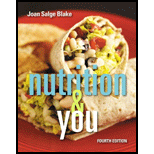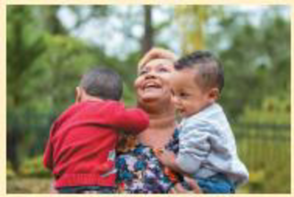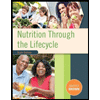
A Case Study
A Wake-Up Call
health CONNECTION
Barbara is a 64-year-old African-American woman with a family history of cancer. Her mom passed away from breast cancer at 70 and her dad passed away from lung cancer at 63. Both of her parents were heavy smokers, but because Barbara doesn’t smoke, she has never considered herself at high risk for cancer despite her family history. Barbara is a very busy woman. She works part-time as a nurse and helps care for her two small grandchildren two days a week. Because she is so busy, Barbara often eats out and she does not have time to regularly exercise.
At her annual physical, Barbara’s doctor finds a lump in Barbara’s breast and orders a mammogram. She also expresses concern over Barbara’s diet and physical inactivity. While this lump turns out to be benign, Barbara decides to use this scare to motivate herself to make lifestyle changes that will hopefully reduce her risk of dying from breast cancer like her mom did.
In 2015, an estimated 232,000 cases of invasive breast cancer will be diagnosed among women in the United States.11 Deaths from breast cancer are highest among African-American women and lowest among Asian/Pacific Islander women. The American Cancer Society recommends that in order to prevent breast and other cancers, women and men should maintain a healthy weight throughout life, engage in regular physical activity, limit sedentary time, consume a healthy, plant-based diet, and limit alcohol consumption.12

Think About It
Barbara wants to reduce her cancer risk by making lifestyle changes. What changes relating to physical activity and diet do you think Barbara’s doctor would recommend?
Want to see the full answer?
Check out a sample textbook solution
- An older adult client is known to be taking 14 different medications. What is the greatest risk for the client? Financial hardship Missed doses Adverse drug interaction Nonadherencearrow_forwardS B is a 54-year-old Latina female who went to her healthcare provider with complaints of heartburn, dysphagia, nausea, and chest pain. She feels bloated and obtains little or no relief from over-the-counter antacids. Her past medical history includes 2-pack-a-day cigarette smoking, stressful job, and chronic use of NSAIDs for chronic back pain. 4. What are some of the cultural considerations the nurse should be are of?arrow_forwardS B is a 54-year-old Latina female who went to her healthcare provider with complaints of heartburn, dysphagia, nausea, and chest pain. She feels bloated and obtains little or no relief from over-the-counter antacids. Her past medical history includes 2-pack-a-day cigarette smoking, stressful job, and chronic use of NSAIDs for chronic back pain. 4. What are some of the cultural considerations the nurse should be are of. 5. Apply 2 QSEN competency concepts to this case study.arrow_forward
- Make a nursing care plan Assessment Diagnosis Planning Interventions Evaluation Multiple Sclerosis A 51-year-old man of Mediterranean origin with an 8-year history of relapsing-remitting MS (RRMS) was admitted to our hospital on suspicion of a relapse. After diagnosis in 2009, the patient had initially been treated with glatiramer acetate. The family medical history offered that the patient's mother and uncle (blood related) both suffered from MS. The patient's uncle died at the age of 52 years after being bedridden for a longer time. The patient had four relapses under glatiramer acetate necessitating treatment with intravenous (IV) steroids initially with a good treatment response. The first relapse leading to the diagnosis of a clinically isolated syndrome (CIS) was an acute central vestibular syndrome leading to dizziness and an ataxic gait dysfunction. At this time, MRI already revealed multiple white matter lesions in the supratentorium, cerebellum, and cervical as well…arrow_forwardA 52-year-old client is in the terminal stage of leukemia. The client has been married for 25 years. He and his wife have three children, ages 15, 18, and 22. One child is graduating from high school, and the 22-year-old is graduating from college. The client and his brother are co-owners of a family hardware business that has been in the family for 60 years. The client was diagnosed with leukemia 10 years ago and has been receiving treatments during reoccurrences since then. He has always been optimistic, but, for the past 2 years, the treatments have not been as successful as in the past. His symptoms have exacerbated and return shortly after the treatments. The physician has told him that, unfortunately, further treatments are to no avail. The client is distressed and in denial of the fact that life is short. He has become depressed because he is concerned about what will happen to his family and his business. The client does not want to visit family members or friends. He has…arrow_forwardA client wants to reduce their risk for heart disease (CVD). The nurse employs the Mediterranean diet tool and informs the client that increasing their score by two points results in which of the following reductions in the risk of death from CVD? Question 18 options: a) 10% b) 7% c) 15% d) 5%arrow_forward
- See the answer Ms. J. is a 30-year-old healthy single mother with two children. She has worked as a paramedic in her community for 6 years. She and her partner responded to a call involving a man who had been drinking heavily at a family party and who was partially conscious. When she and her partner attempted to transfer the 100-kg man to a stretcher, the man grabbed her neck, causing her severe pain. Ms. J.’s doctor diagnosed a spinal injury and completed papers for Ms. J. to be absent from work. He recommended rest and application of heat and cold to the neck. One week later, Ms. J. saw him again, reporting continuing pain. She was referred to a specialist who told her she had a herniated disk in the cervical area of her neck and would require ongoing care and rehabilitation. Ms. J. has been on disability leave for 6 months, during which she has continued to have severe neck, jaw, and back pain. She takes acetaminophen with codeine as required, and sees a physiotherapist and a…arrow_forwardCan you make a list of Nursing Diagnosis (Not using the "Risk") about the given scenario which is A Family with a Sick Child, Pregnant Woman Home Visit data gathered: The family lives in a two-room house made of light materials, situated in an urban community, which is about 8 km from the health center. Anastacia Cruz is an elementary graduate. She did not finish her education due to poverty. She married at the age of 16 and got pregnant with her first baby. She is a “labandera” and earns 300 per day. But she only has work three times a week. The other members of the family include: Mariano, Mrs. Anatacia Cruz husband, and their children namely: Rodrigo,Rodora,Renato,Rosita,Romina,Ricardo,Roberto,Maria and Juana. Anastacia Cruz husband, Mariano, 45, is a garbage collector and works every Monday, Wednesday and Friday only with an income per day of 500php. He is a known alcoholic in the neighborhood and oftentimes breaks the empty alcohol bottles in their front lawn. He has a…arrow_forwardCould you please help me with a care plan on this patient? Linda Waterfall 48 years old was diagnosed with aggressive form of breast cancer after a biopsy a few days ago go. Care plan should include: Assessment, 6 nursing diagnosis (3 physiologic and 3 psychosocial ), outcomes and goals, nursing actions, evaluation. (ADPIE format)arrow_forward
- My client Mario, 26 years old, male, who works as a security guard. He said that he has recently been feeling pain all over his chest and has a high blood pressure. He smokes and drinks alcohol occasionally. He was recently diagnosed of hypertension. Give me a three (3) client learning ability. Give me a three (3) client care learning deficits.arrow_forwardNurse Sweng, develops objectives for the healthcare plan designed for Mr. Ubas Family. She considers objectives as: A. Set for an ideal family B. Health interventions for the family to recognize the problem C. Milestone to reach the health target or destination D. Desired end to resolve the health problemarrow_forwardLaura is a 27-year-old never married Caucasian woman. Laura's father is 67 years old and has early-onset Alzheimer's disease. Laura also has a 56-year-old mother, who is in excellent physical health and a 31-year-old sister. Laura reports her father's health is rapidly declining. He has limited cognitive ability and memory, including loss of recall for faces and names. Laura is currently seeking therapy because she is experiencing depression and having trouble functioning. During her intake, she also reports having a great deal of anger toward her mom and openly shares her intense feelings of loss due to her father's declining health; she reports deeply missing the emotional bond they once shared. She also reports having a solid relationship with her sister, though she wishes they were emotionally closer. Before describing to Laura, the basic tenets of family systems, you first commend her for seeking out help. You also assure her that her feelings are real and that she is going…arrow_forward
 Comprehensive Medical Assisting: Administrative a...NursingISBN:9781305964792Author:Wilburta Q. Lindh, Carol D. Tamparo, Barbara M. Dahl, Julie Morris, Cindy CorreaPublisher:Cengage Learning
Comprehensive Medical Assisting: Administrative a...NursingISBN:9781305964792Author:Wilburta Q. Lindh, Carol D. Tamparo, Barbara M. Dahl, Julie Morris, Cindy CorreaPublisher:Cengage Learning Nutrition Through the Life Cycle (MindTap Course ...Health & NutritionISBN:9781305628007Author:Judith E. BrownPublisher:Cengage LearningUnderstanding Health Insurance: A Guide to Billin...Health & NutritionISBN:9781337679480Author:GREENPublisher:Cengage
Nutrition Through the Life Cycle (MindTap Course ...Health & NutritionISBN:9781305628007Author:Judith E. BrownPublisher:Cengage LearningUnderstanding Health Insurance: A Guide to Billin...Health & NutritionISBN:9781337679480Author:GREENPublisher:Cengage



